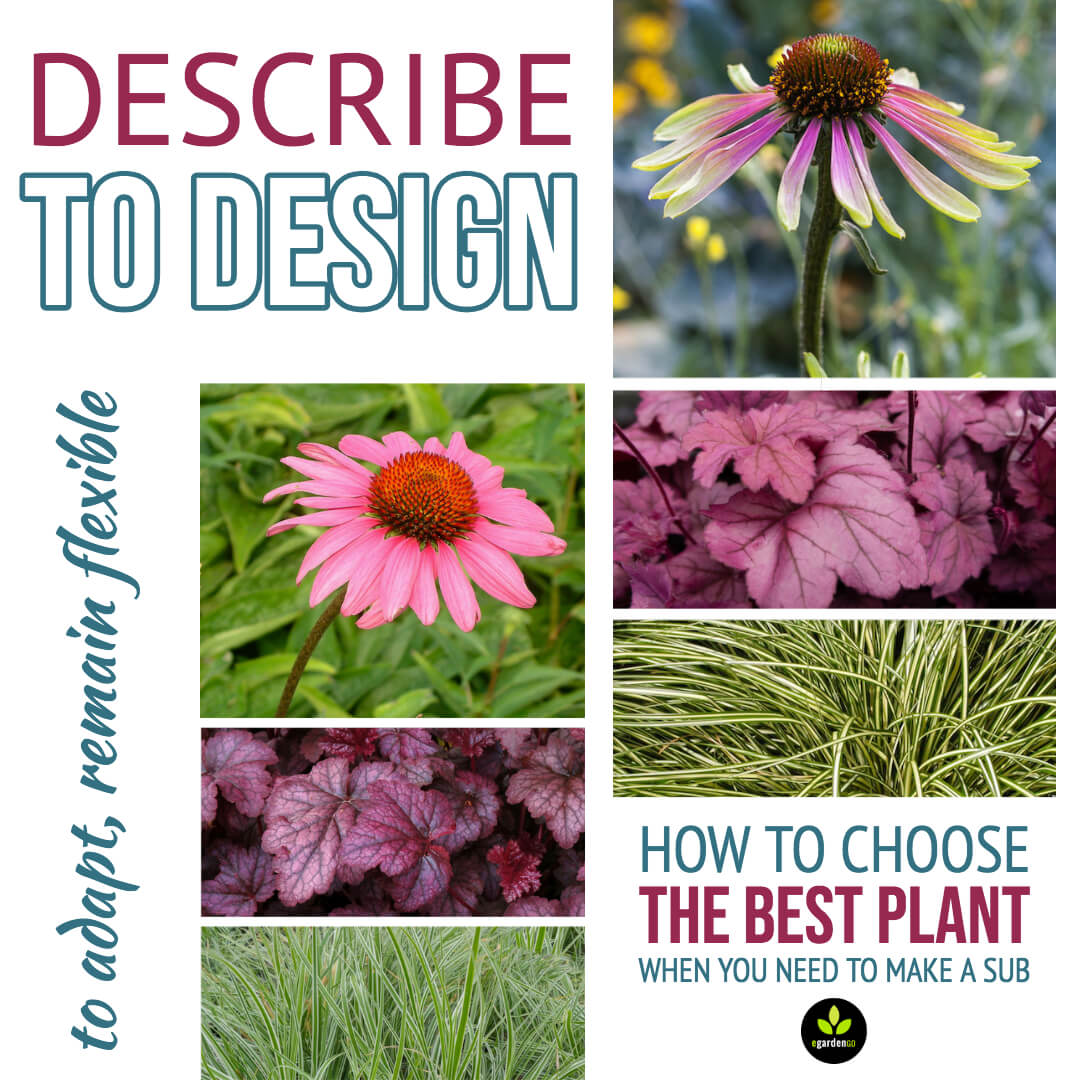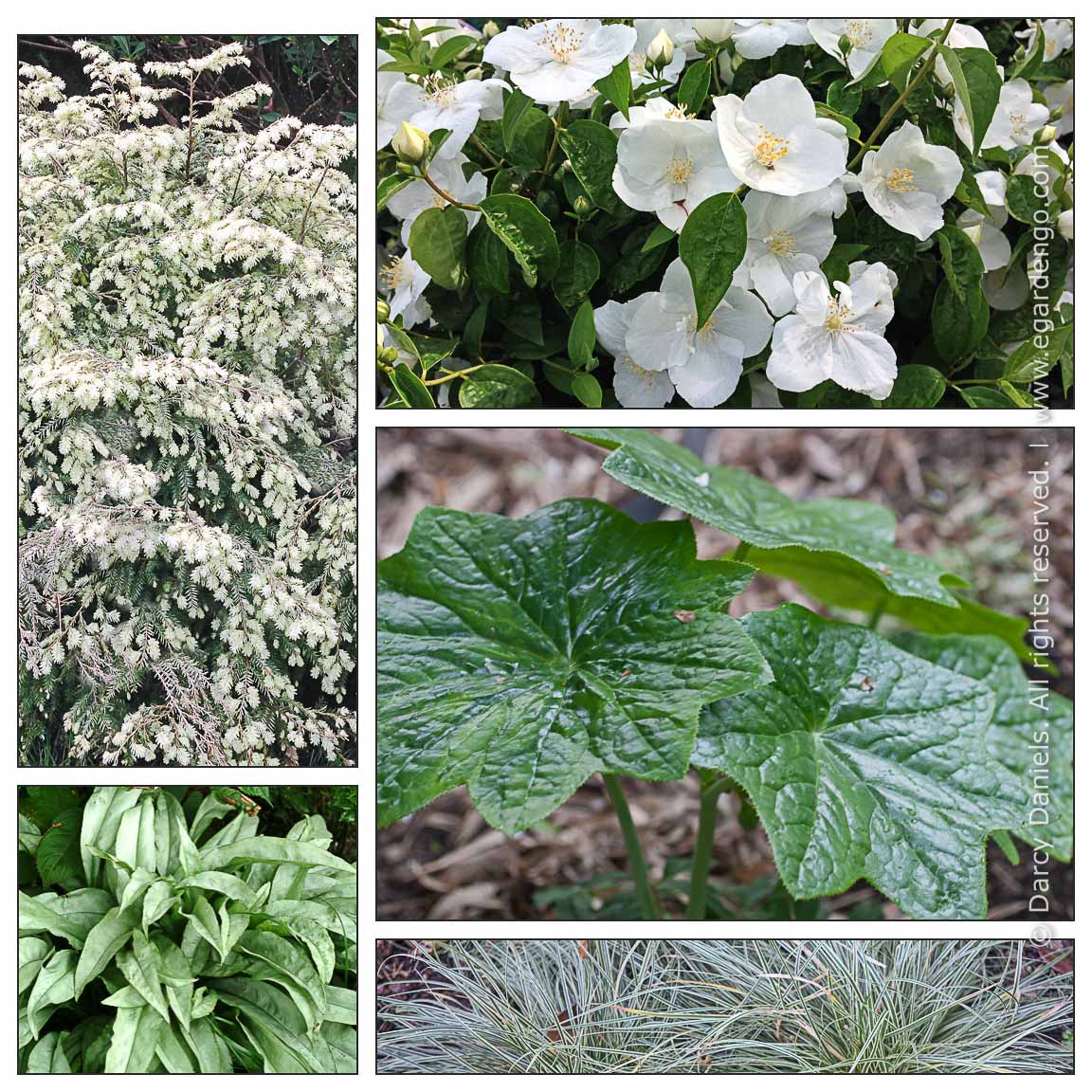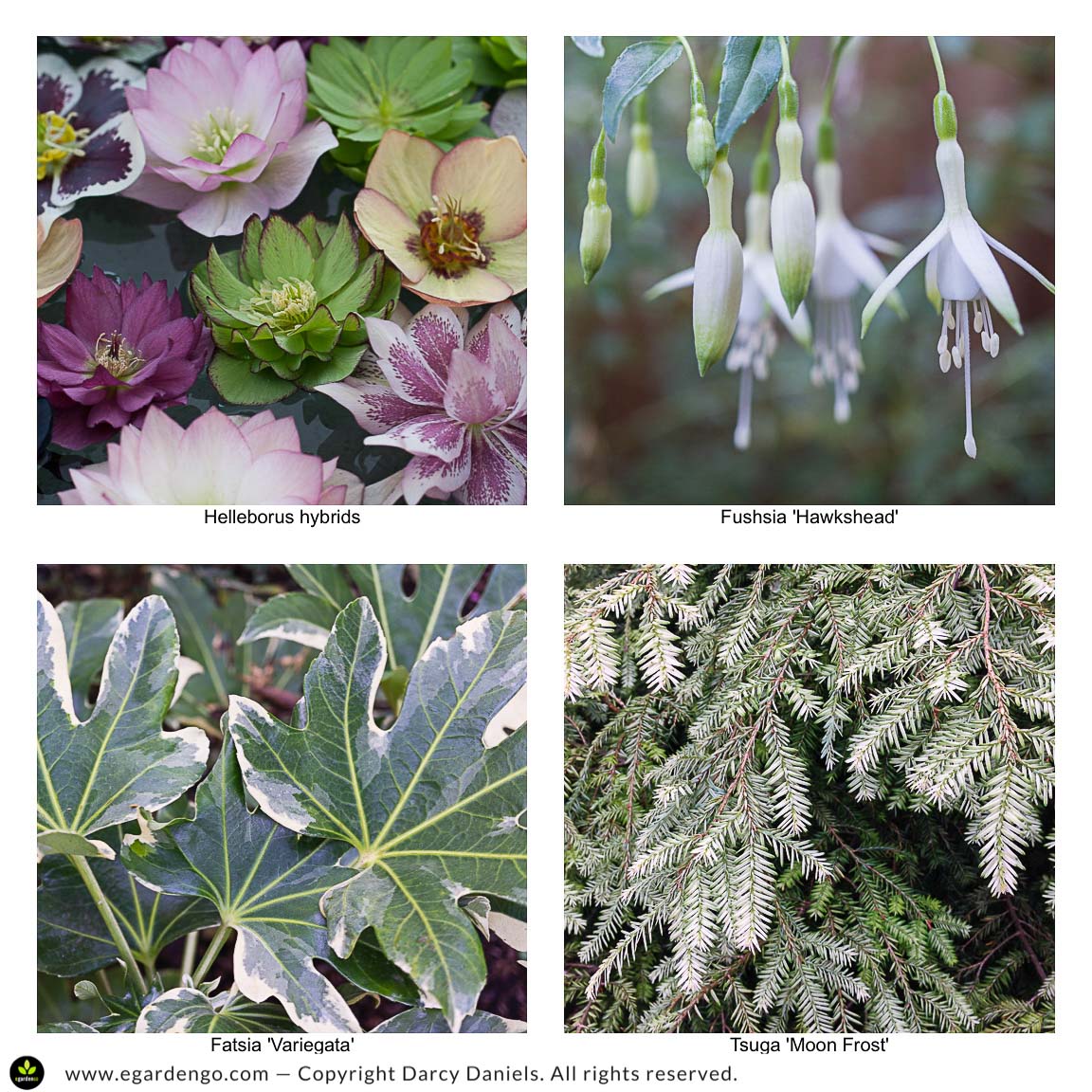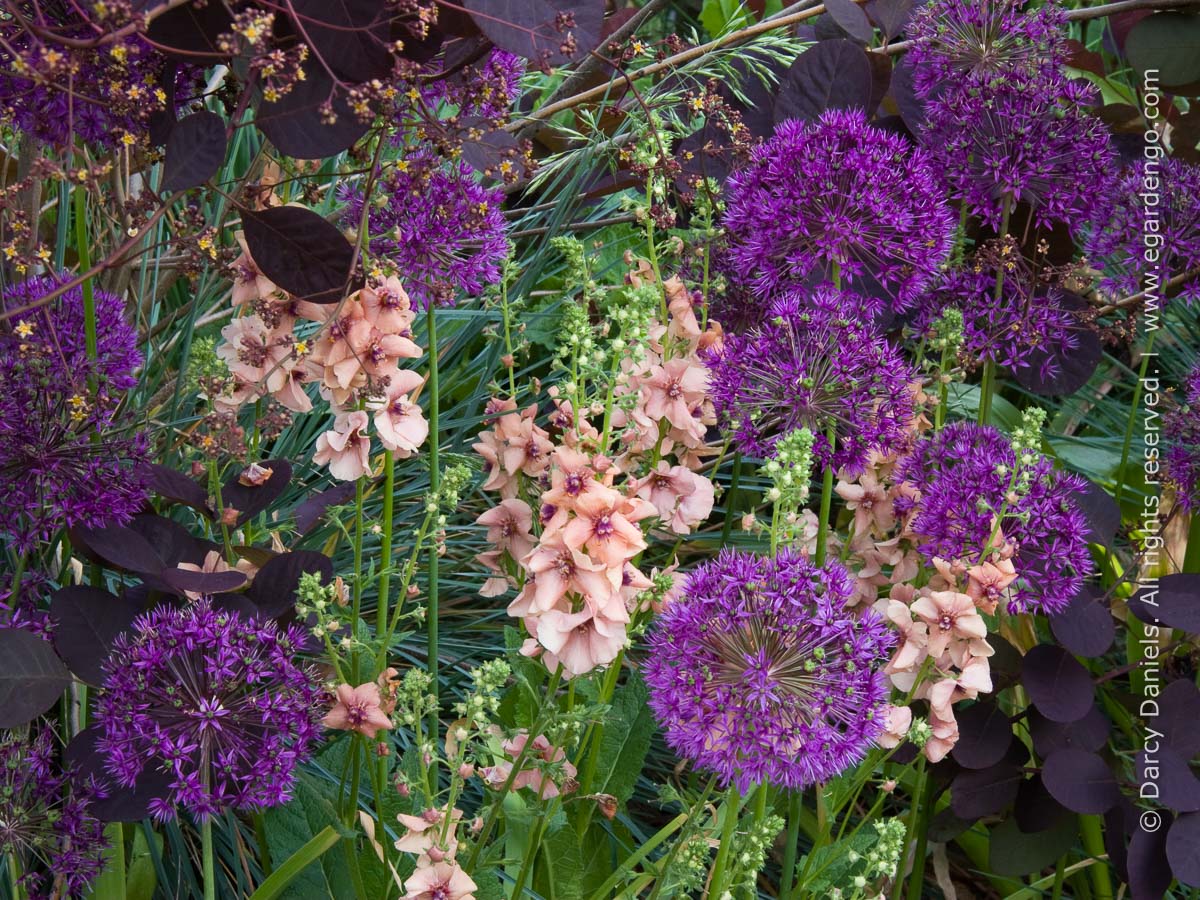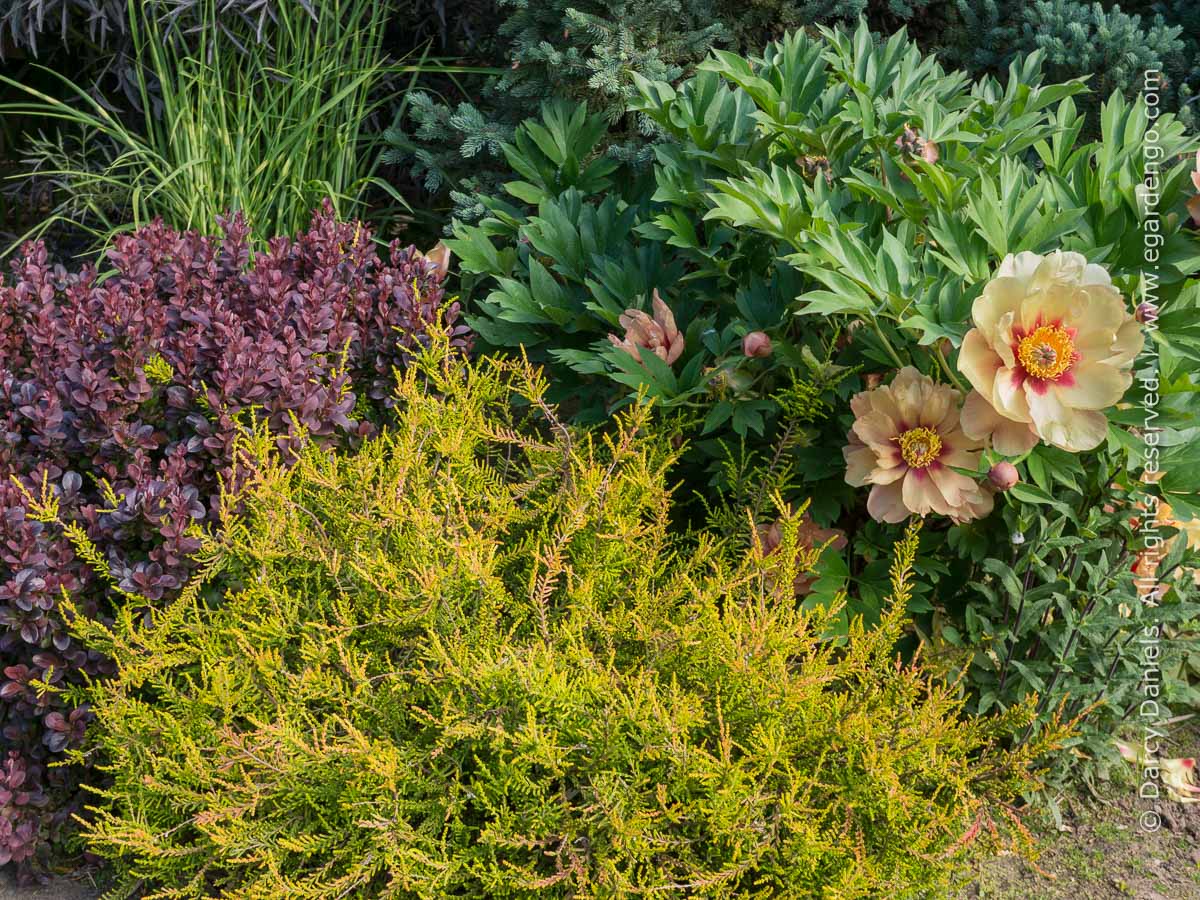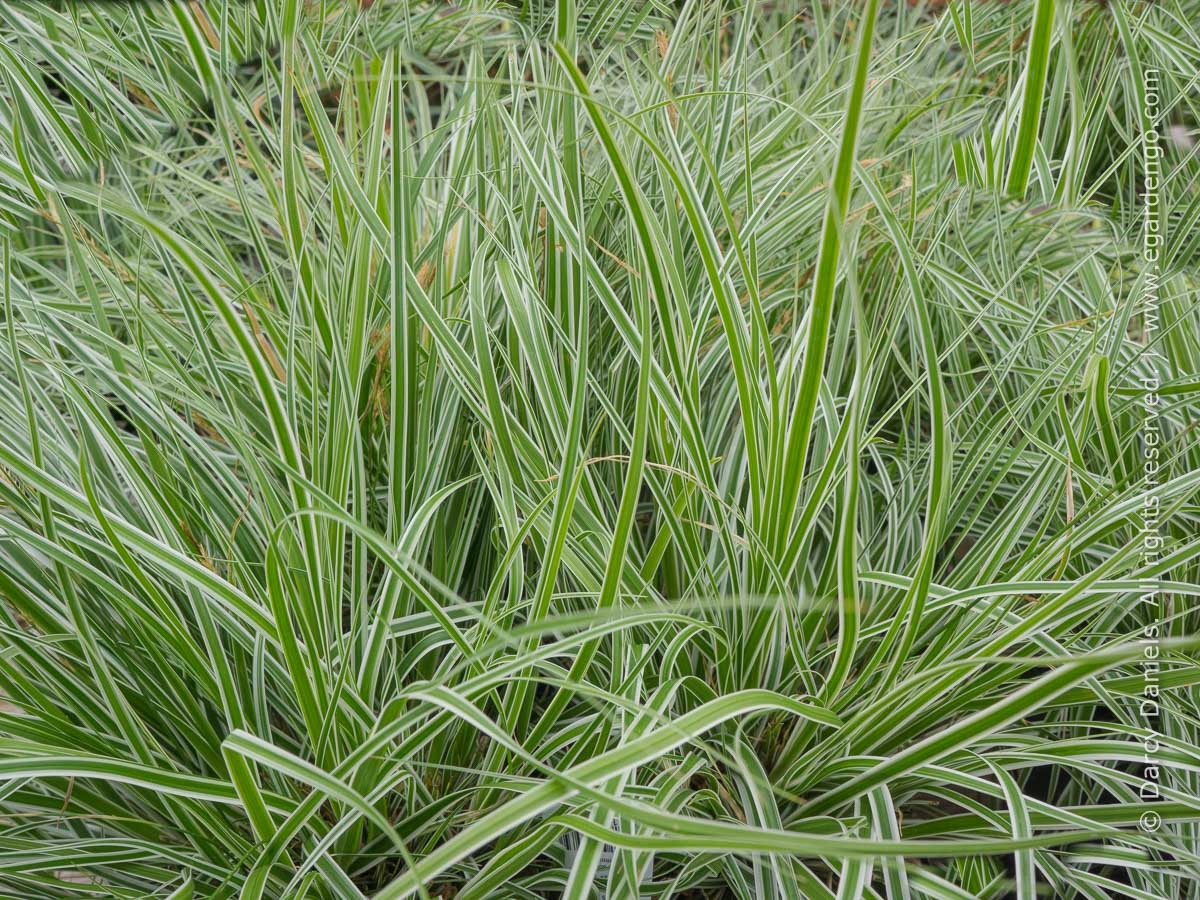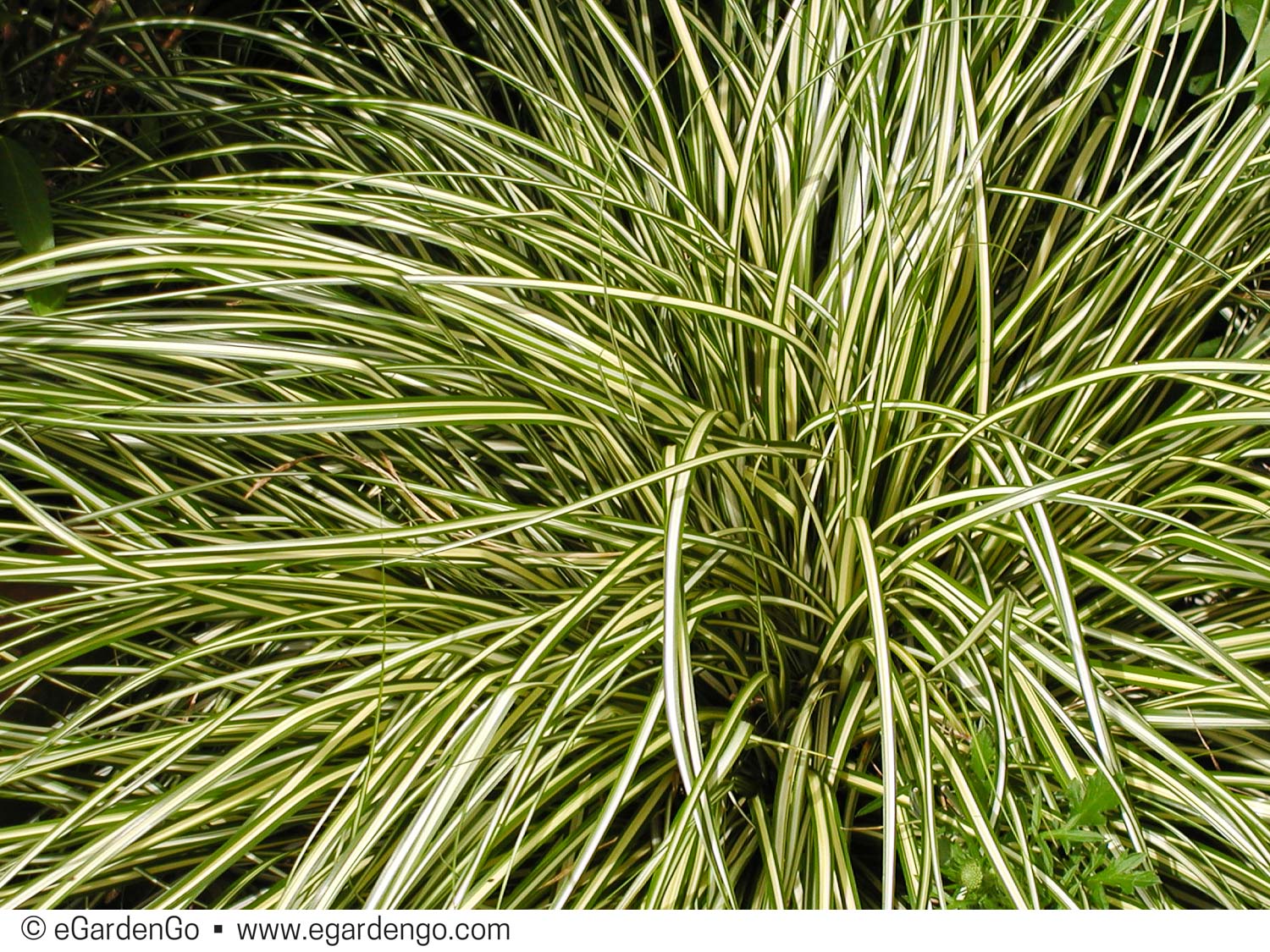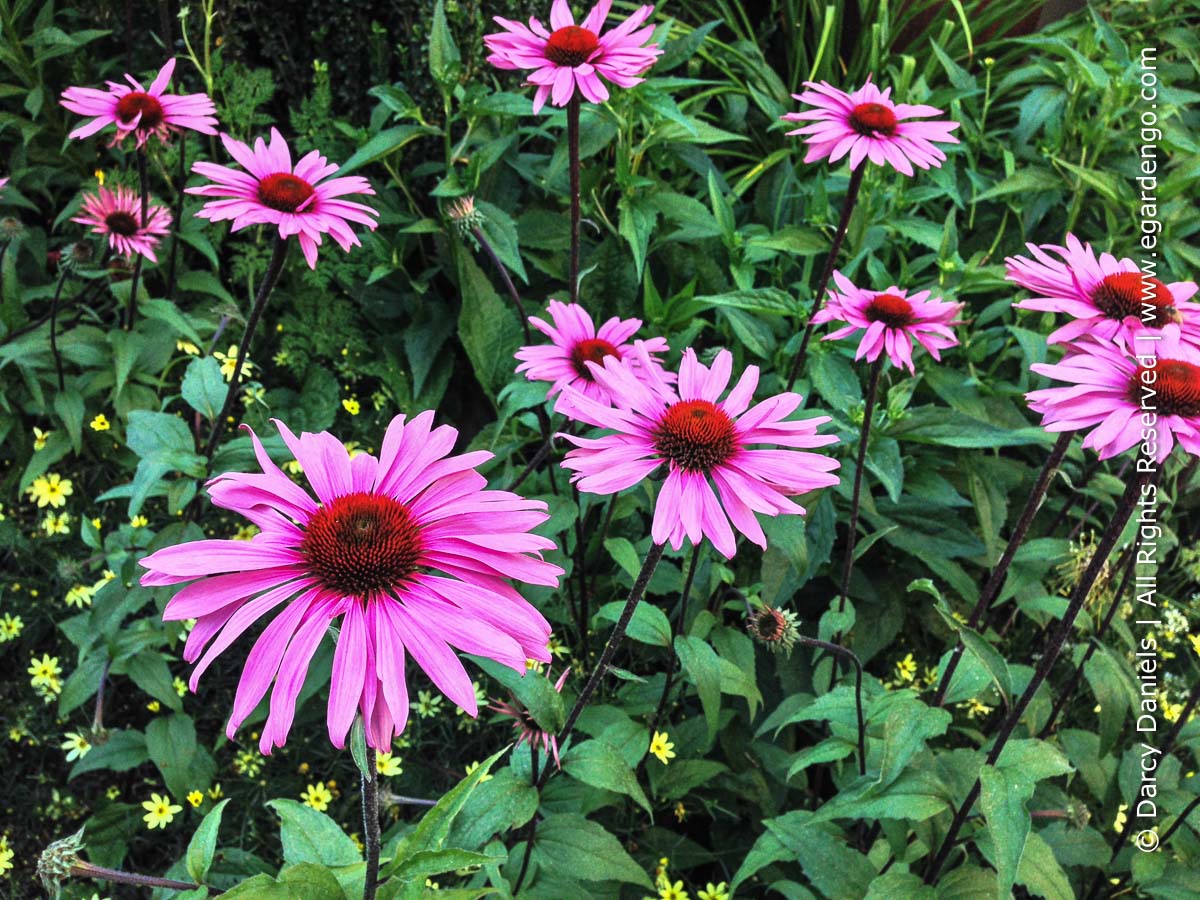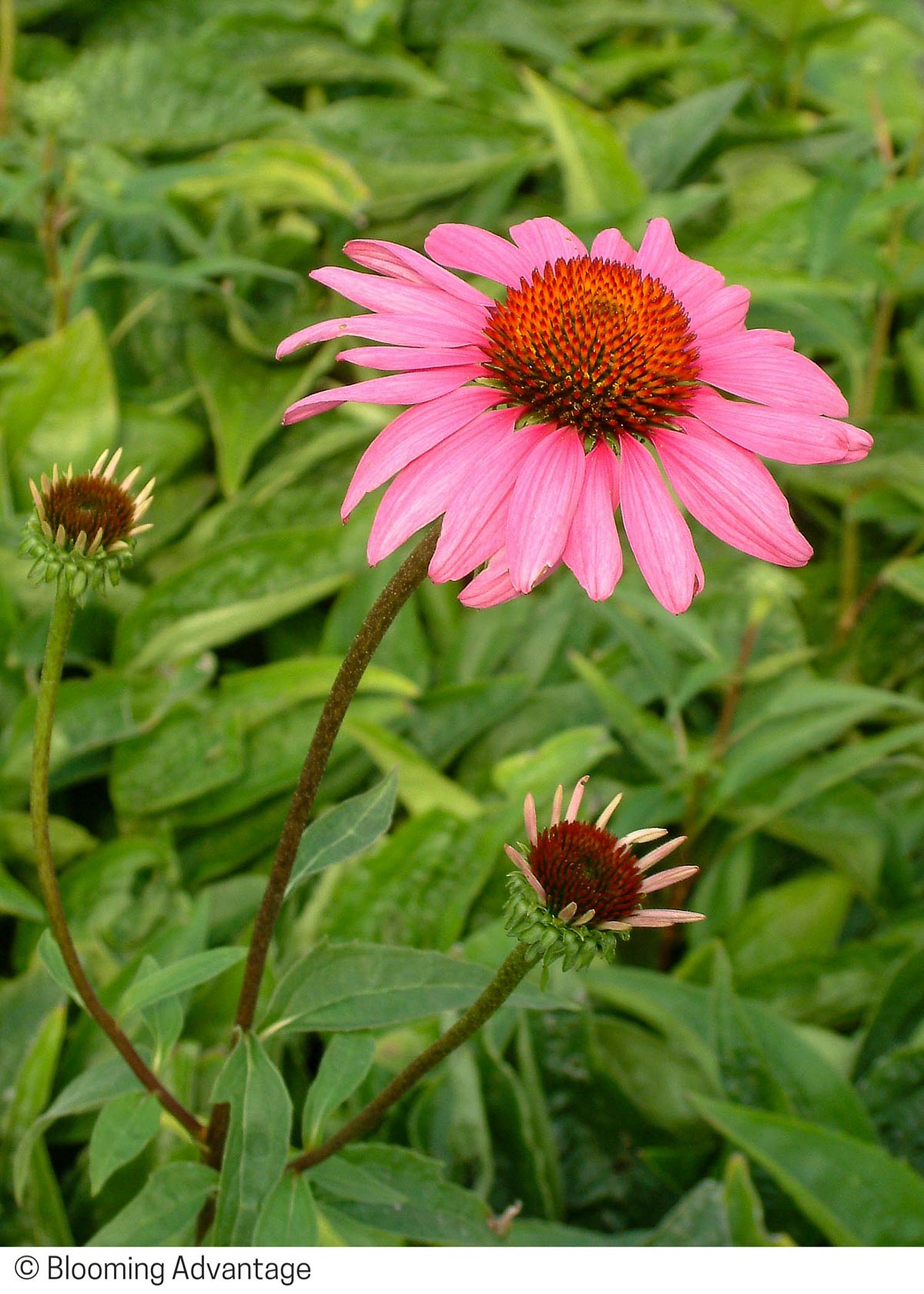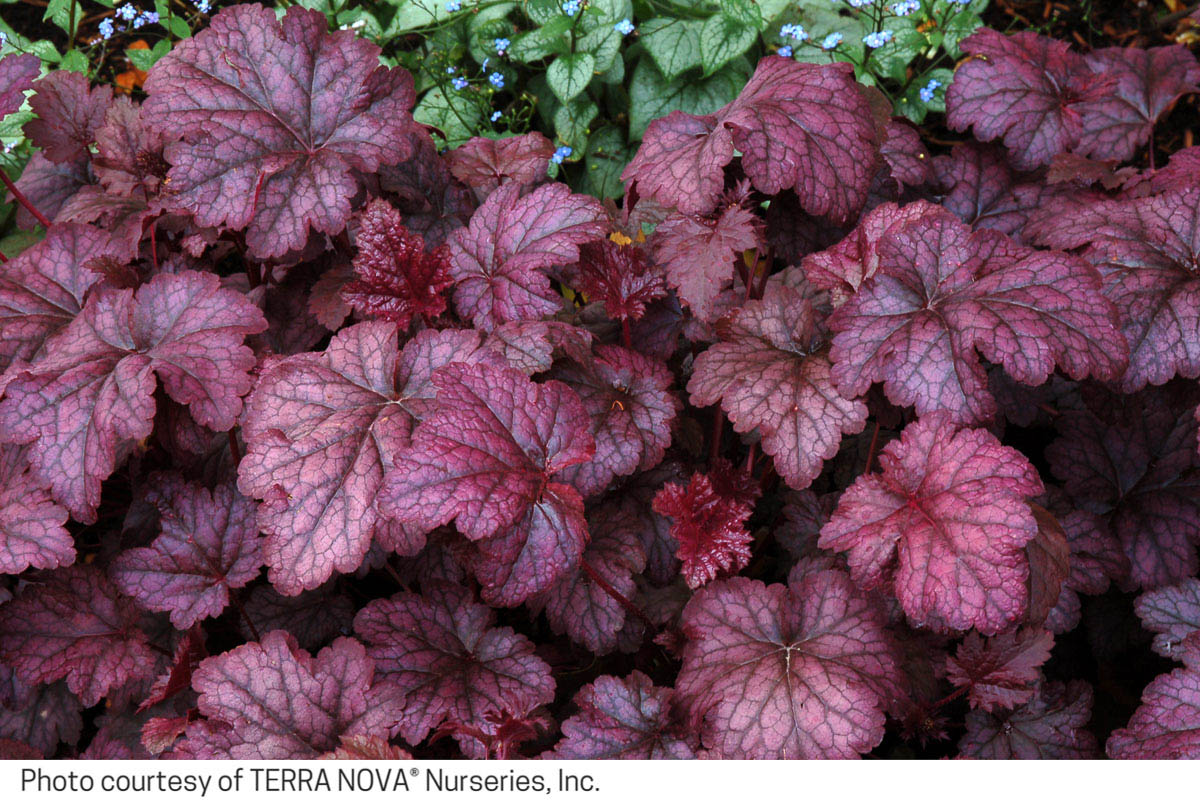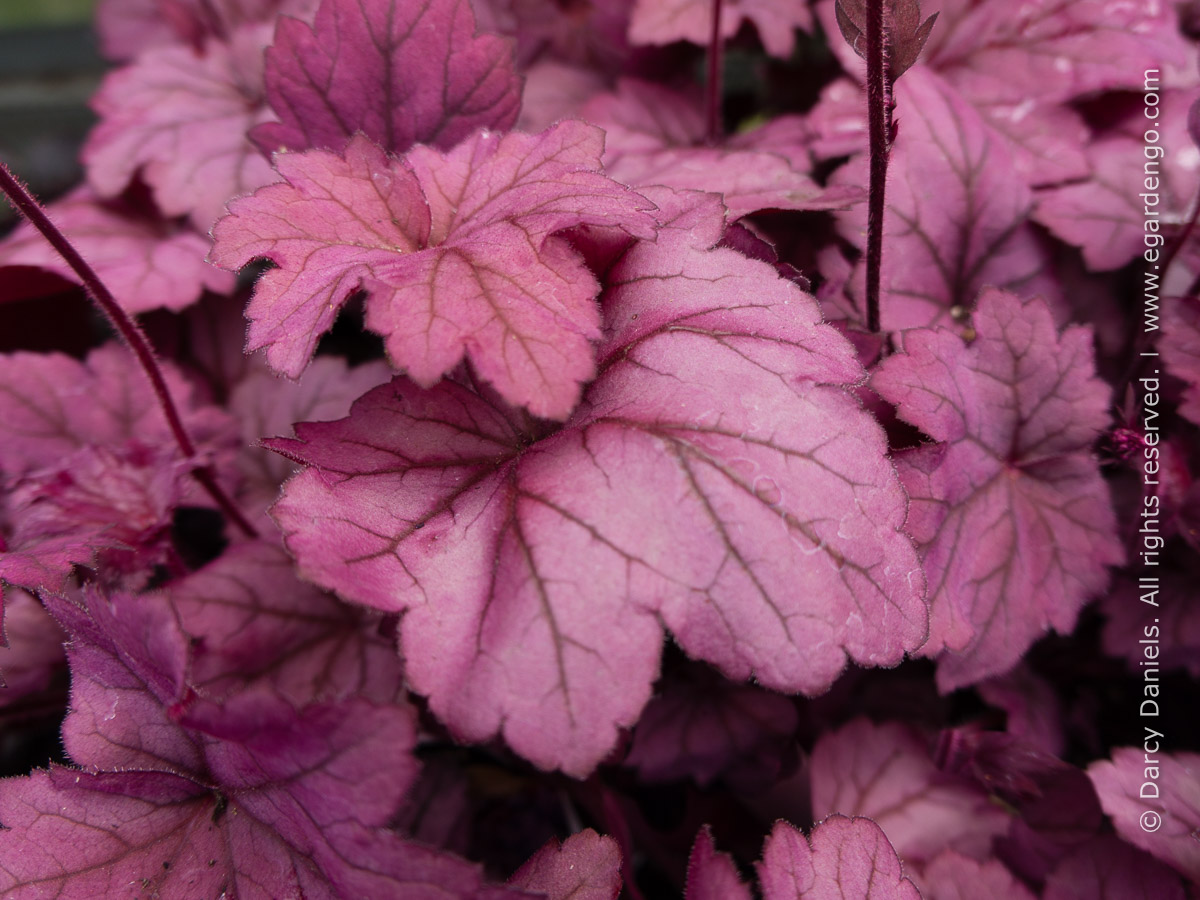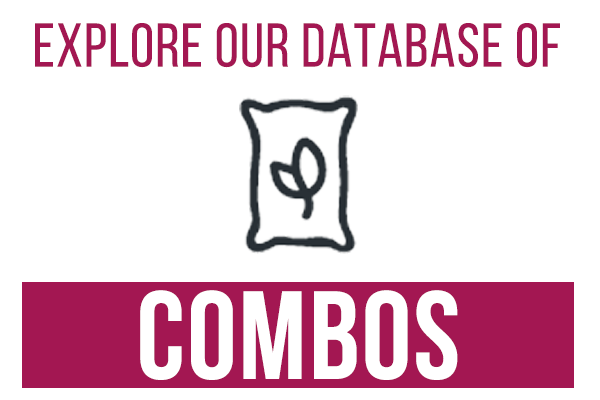I'm a plant lover, just like you, so I'm inclined to experiment with new varieties of old favorites as they come to market, and you'll find many of them included in our combos. That said, eGardenGo isn’t intended to be an exhaustive directory of every plant available on the nursery shelves—have you counted how many varieties of pink-toned echinacea, burgundy heuchera, or dwarf red-leaf maples there are out there?
So, what to do if you can't locate the exact variety you want? Is the combo a bust? Absolutely not. These four tips will help you make substitutions that maintain the integrity of the plant combination, tell a story in keeping with the combo you’re trying to recreate, and keep you in the game.
DESCRIBE TO DESIGN
To Adapt & Remain Flexible
The trick is to understand why the plant was selected as a member of the vignette in the first place. The best way to do this is to hone in on its key characteristics. What role is it playing? Are there practical considerations, such as does it have a "job" to do? What design attributes is it contributing in terms of color, form and texture?
By understanding these things about the plant you're looking for, you'll be be better able to adapt the plant combos from eGardenGo to work in your garden.
Perhaps you need to make an adjustment to sub out a tender plant for one that is hardy in your growing zone, or choose an alternate when you can't find the specified plant at your local nursery, or you might even use these ideas to select a different plant that's more to your taste for rounding out a vignette.
① Growing Conditions
Make sure you’re paying attention to the cultural needs of the planting combination and only considering subs that are appropriate to your growing zone and soil conditions, and which have the same water requirements as the other members of the team.
② Design Attributes
Think about color, shape, texture. Consider the color of the plant’s foliage and/or flower, and the seasons in which it contributes same.
As I’ve mentioned in previous posts, I often start with a shape study when composing my vignettes. A rounded form begs to be paired with an upright shape; bold begs for fine; flowing for rigid; and so on. I want to know what’s covering the ground and what’s creating the canopy – oh, and the mid-plane, can’t forget about that! And you’ll want to be careful to match expected size and rate of growth so that the overall scale of the vignette works as intended.
Spotlighting Members of the Team
Some combos are composed to accentuate and put a spotlight on a seasonal detail, so you'll want to take care when making a substitution in order to replicate the seasonal aspect of the display.
The combos below are examples of this. The first two add a bright note with white blooms that add sparkle when paired with silver and white-margined foliage.
The lower two celebrate a moment—when blooming, their “eyes” echo their neighbors’ colors.
-
Cool, Fresh, Minty Green Plant Combo
Zone: 7, 8
view combo
Exposure: Open Shade, Filtered Sun, Morning Sun, Open Shade, Part Shade, Part Sun, Full Shade
-
Plant Combo to Sparkle in the Shade
Zone: 7, 8, 9
view combo
Exposure: Open Shade, Filtered Sun, Morning Sun, Open Shade, Part Shade, Part Sun, Full Shade
-
Blooming Perennial Combo with Contrasting Bloom Shapes
Zone: 5, 6, 7, 8
view combo
Exposure: Afternoon Sun, Full Sun
-
Mixed Border Combo with Misaka ITOH Peony
Zone: 5, 6, 7, 8
view combo
Exposure: Afternoon Sun, Full Sun, Part Sun, Full Sun
③ What Job is it Doing?
Did the plant you want to replace have an assigned responsibility, such as providing shade, screening for privacy, or covering the ground? Will the replacement get that job done and do it well?
Perhaps the original was selected for a particular form and design function; a series of columnar plants that lend rhythm and movement to a design by virtue of their shape and placement, for example. Taking that example a step further—after reconciling for similar size, color and cultural conditions—it's likely that the columnar variety of the Plum Yew and the Bean Pole yew could be interchanged in a design.
④ Building Your Team of Champions
You can’t always find a match based on all the attributes you're considering. If you're set on preserving your design intent, you'll want to resist heading off into an entirely new direction. Then again, you may come up with something fresh and different, and that could be great too.
In the end, all that matters is this: are the plants healthy, happy and thriving? Does the combo make you happy? Do you find it beautiful to look at? Boom! Success.
Keep the Game Going
Carex 'Everest' or Carex 'Evergold'? Echinacea 'Ruby Star' versus Echinacea 'Merlot' or perhaps even Echinacea 'Green Envy? Would Heuchera 'Georgia Plum' make a suitable stand-in for Heuchera 'Amethyst Myst'? And which variety of hellebore to pick, when you have so many pretty faces to choose from?
Ay yi yi!
These are common dilemmas, but I have good news. In most cases, it doesn’t make much of a difference. In the images below, you can easily see strong similarities in the featured plants.
And here's why that's awesome: it means that you'll be able expand the number of plant combo ideas you can glean from eGardenGo by also looking at the recipes for plants that are similar to the one you're considering. For example, we have lots of combos that use Echinacea 'Merlot' because it's a personal favorite, but you could easily sub the straight species or E. 'Ruby Star', and achieve almost identical results.
-
Carex oshimensis 'Everest'
Everest Weeping Sedge
Type: Grass / Grass-Like, Groundcover, Perennial
view plant
Exposure: Part Sun, Part Shade, Morning Sun, Filtered Sun, Open Shade, Open Shade
Zone: 5, 6, 7, 8, 9, 10 -
Carex oshimensis 'Evergold'
Evergold Sedge
Type: Grass / Grass-Like, Groundcover, Perennial
view plant
Exposure: Filtered Sun, Full Sun, Morning Sun, Open Shade, Part Shade, Part Sun
Zone: 6, 7, 8, 9 -
Echinacea 'Merlot'
Merlot Coneflower
Type: Perennial
view plant
Exposure: Full Sun, Full Sun, Afternoon Sun, Reflected Heat
Zone: 4, 5, 6, 7, 8, 9 -
Echinacea purpurea 'Ruby Star'
Ruby Star Coneflower
Type: Perennial
view plant
Exposure: Full Sun, Full Sun, Afternoon Sun, Reflected Heat
Zone: 3, 4, 5, 6, 7, 8 -
Heuchera 'Amethyst Myst'
Amethyst Myst Coral Bells
Type: Perennial
view plant
Exposure: Part Sun, Part Shade, Morning Sun, Filtered Sun, Open Shade, Open Shade
Zone: 4, 5, 6, 7, 8, 9 -
Heuchera 'Georgia Plum'
Georgia Plum Coral Bells
Type: Perennial
view plant
Exposure: Part Shade, Full Shade, Morning Sun, Filtered Sun, Open Shade, Open Shade
Zone: 4, 5, 6, 7, 8, 9

